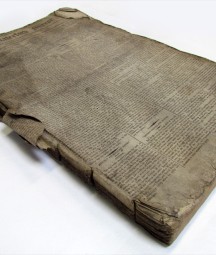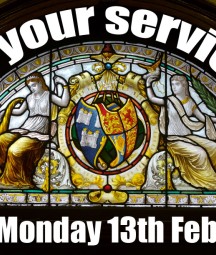by Abigail Rieley, Writer & NLI Reader
For me, former Taoiseach Charlie Haughey will always be inextricably linked to the rattling of microfilm readers. I was sitting at one in the Reading Room in 1992 when he made his resignation speech, listening to the reaction from Leinster House next door on the headphones of my Walkman. When they announced he was leaving I told my neighbours, and a crowd of us hurried down the stairs and across the entrance hall to stand on the steps or to press our faces against the railings to watch history being made.
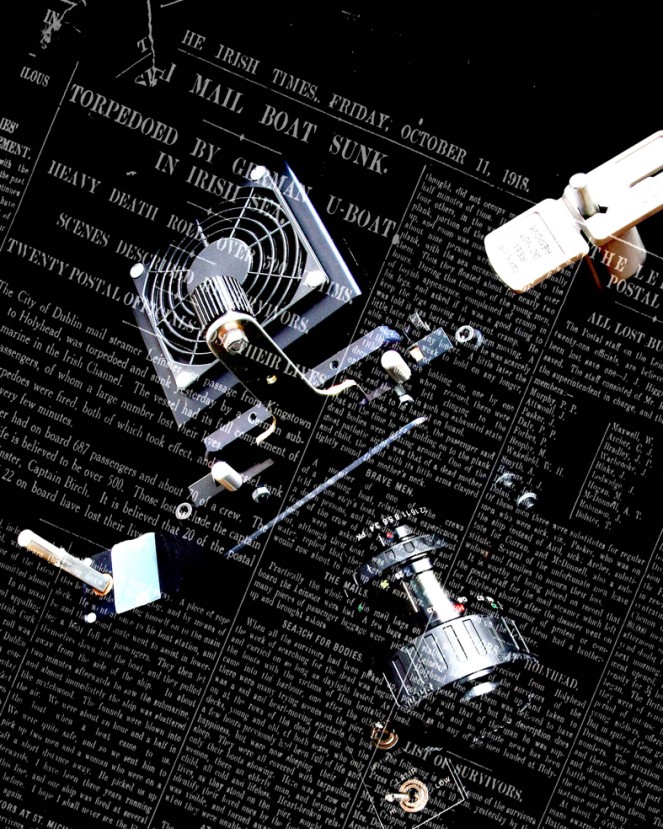
Irish Times and Microfilm Machinery Mashup by photographer Michael Stamp
Back then I was only dreaming of becoming a writer, paid to search old editions of the Irish Times to find exciting headlines to commemorate people's birthdays. I applied for my National Library of Ireland reader's ticket with trepidation, feeling as if I was trying it on. I remember being vaguely terrified sitting on a grey plastic chair outside a forbidding doorway on the left of the entrance hall waiting to argue my case. I was genuinely proud when I was awarded the reader's ticket that made me a part of such a historic institution.
Sitting in the Reading Room it's hard not to think of who's sat there before you, who's gazed up at the dancing cherubs round the walls, who's cursed the peculiarities of the ill-tempered microfilm reader machines. Generations of writers and academics have climbed that stone staircase, used the ridiculously sumptuous toilets, sat on the steps outside during a sunny lunchtime and gazed across to the mirror building of the National Museum. It's a special place to work, at once a haven and a hub. You sit in that wooden-shelved cocoon, enveloped by the scent of old books, while just outside life goes on and history is frequently made. The one certainty is that whatever history is going on outside, it'll sooner or later find its way inside and become a part of the archive.
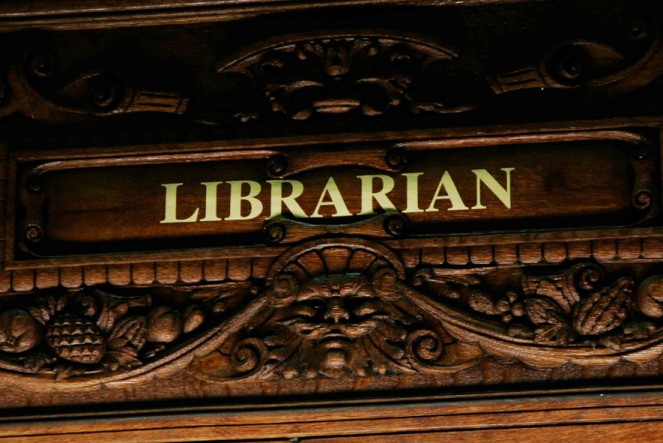
Fierce Guardian by photographer Michael Stamp
I left the headline job after a few months and regretfully went back out into the real world. Qualifications followed, then jobs and suddenly I didn't have to dream about being a writer any more. It might not have resulted in as many days sitting in coffee shops gazing off into the middle distance as I had been led to believe, but it was a living. Making that living led me far away from the safe confines of the Reading Room. As a journalist I was out there with the history makers instead of watching through the railings. But I have always remembered those days wrestling with microfilm with disproportionate fondness.
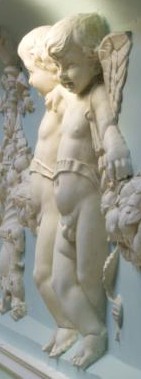
Our Dancing Angels or Putti for the more prosaic among you
Then last year, writing finally brought me back to the microfilms. Once again I'm looking for headlines but they're no longer to commemorate the day people were born. In the decade and a big bit that have passed, a lot has changed. The reader's ticket application has been computerised, the door to the left of the entrance hall now opens to reveal banks of computers where you can search the National Library's collections or trace your family tree, and the library itself has grown alarmingly. The angels still dance round the walls of the Reading Room though and the old books still have the same scent. On a sunny day you can still sit on the steps and watch the comings and goings from Leinster House and history continues to roll on beyond the railings.
The rattle of the microfilms is the same too. The machines have moved out of the main Reading Room these days but you can still hear people scrolling through the years. Specks of dust still hang in the yellow light that shines through the microfilm. The microfilms themselves still seem to have a rather malevolent mind of their own when you're looking for something specific. Sitting beside a grand old fireplace at a microfilm reader that may even be one of the ones I used to use way back when, there's a wonderful feeling of continuity, a thread that links back to the time when the newspapers on the reel were sold on the streets. The National Library is rooted in the history of this town we live in, and when you work from there you have those same roots. It's a magical place to work and no matter how much I may curse them I'll always have a soft spot for microfilms.
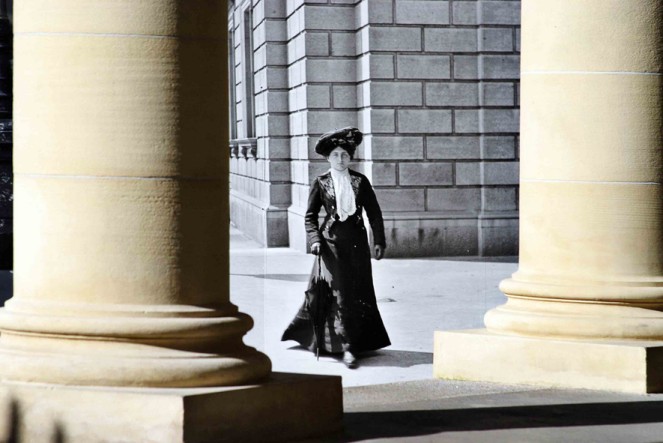
Our Miss Considine, captured striding into the Library perhaps to read the latest news in papers that Abigail and others now consult on microfilm or online. Photographer Michael Stamp
